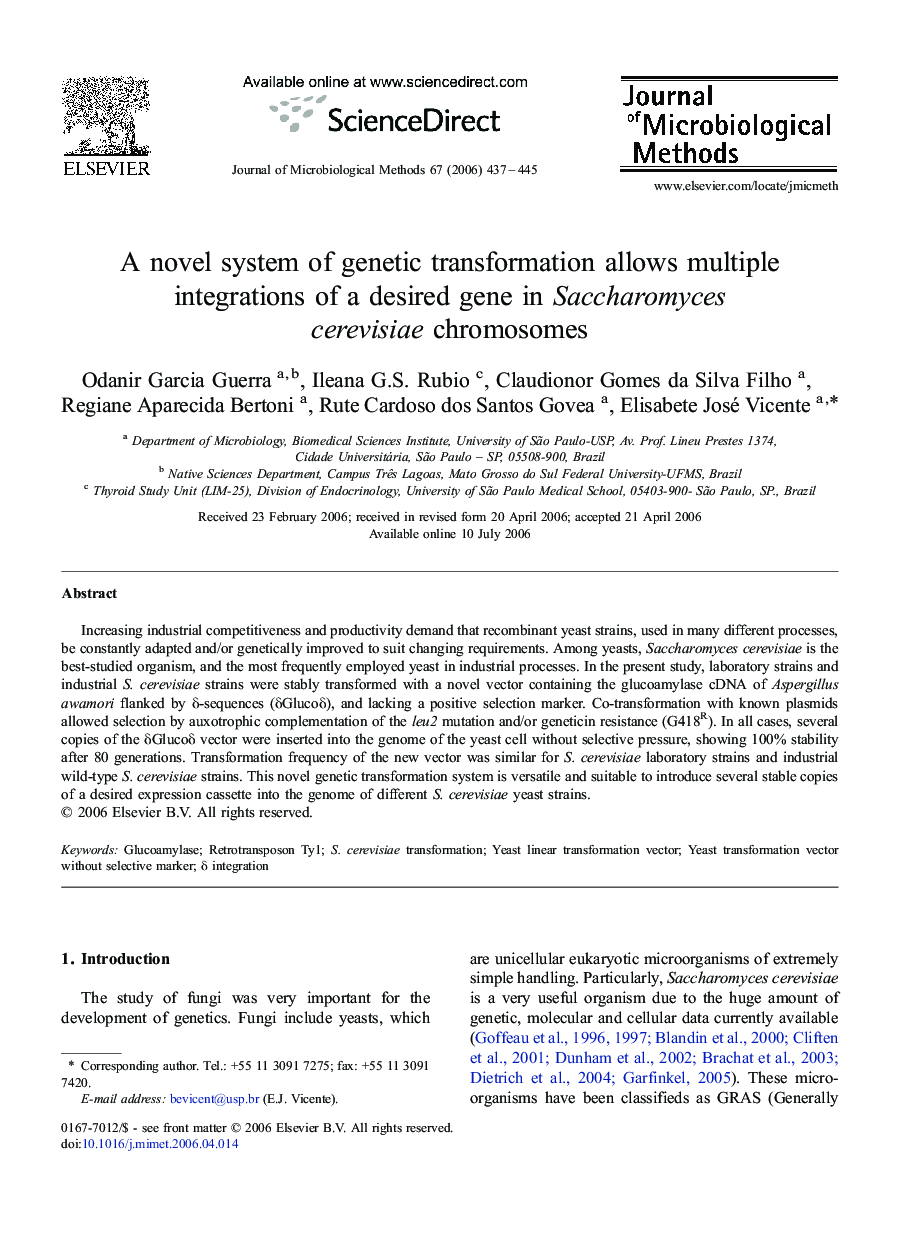| Article ID | Journal | Published Year | Pages | File Type |
|---|---|---|---|---|
| 2091394 | Journal of Microbiological Methods | 2006 | 9 Pages |
Increasing industrial competitiveness and productivity demand that recombinant yeast strains, used in many different processes, be constantly adapted and/or genetically improved to suit changing requirements. Among yeasts, Saccharomyces cerevisiae is the best-studied organism, and the most frequently employed yeast in industrial processes. In the present study, laboratory strains and industrial S. cerevisiae strains were stably transformed with a novel vector containing the glucoamylase cDNA of Aspergillus awamori flanked by δ-sequences (δGlucoδ), and lacking a positive selection marker. Co-transformation with known plasmids allowed selection by auxotrophic complementation of the leu2 mutation and/or geneticin resistance (G418R). In all cases, several copies of the δGlucoδ vector were inserted into the genome of the yeast cell without selective pressure, showing 100% stability after 80 generations. Transformation frequency of the new vector was similar for S. cerevisiae laboratory strains and industrial wild-type S. cerevisiae strains. This novel genetic transformation system is versatile and suitable to introduce several stable copies of a desired expression cassette into the genome of different S. cerevisiae yeast strains.
